Computational Methods in Lanthanide and Actinide Chemistry by Michael Dolg, ISBN-13: 978-1118688311
[PDF eBook eTextbook]
480 pages
Publisher: Wiley; 1 edition (2015-04-20)
Language: English
ISBN-10: 1118688317
ISBN-13: 978-1118688311
The f-elements and their compounds often possess an unusually complex electronic structure, governed by the high number of electronic states arising from open f-shells as well as large relativistic and electron correlation effects. A correct theoretical description of these elements poses the highest challenges to theory.
Computational Methods in Lanthanide and Actinide Chemistry summarizes state-of-the-art electronic structure methods applicable for quantum chemical calculations of lanthanide and actinide systems and presents a broad overview of their most recent applications to atoms, molecules and solids. The book contains sixteen chapters, written by leading experts in method development as well as in theoretical investigations of f-element systems.
Topics covered include:
- Relativistic configuration interaction calculations for lanthanide and actinide anions
- Study of actinides by relativistic coupled cluster methods
- Relativistic all-electron approaches to the study of f- element chemistry
- Relativistic pseudopotentials and their applications
- Gaussian basis sets for lanthanide and actinide elements
- Applied computational actinide chemistry
This book will serve as a comprehensive reference work for quantum chemists and computational chemists, both those already working in, and those planning to enter the field of quantum chemistry for f-elements. Experimentalists will also find important information concerning the capabilities of modern quantum chemical methods to assist in the interpretation or even to predict the outcome of their experiments.
Table of contents
Contributors xiii
Preface xvii
1 Relativistic Configuration Interaction Calculations for Lanthanide and Actinide Anions 1
Donald R. Beck, Steven M. O’Malley and Lin Pan
1.1 Introduction 1
1.2 Bound Rare Earth Anion States 2
1.3 Lanthanide and Actinide Anion Survey 3
1.3.1 Prior Results and Motivation for the Survey 3
1.3.2 Techniques for Basis Set Construction and Analysis 6
1.3.3 Discussion of Results 9
1.4 Resonance and Photodetachment Cross Section of Anions 12
1.4.1 The Configuration Interaction in the Continuum Formalism 13
1.4.2 Calculation of the Final State Wavefunctions 15
2 Study of Actinides by Relativistic Coupled Cluster Methods 23
Ephraim Eliav and Uzi Kaldor
2.1 Introduction 23
2.2 Methodology 25
2.2.1 The Relativistic Hamiltonian 25
2.2.2 Fock-Space Coupled Cluster Approach 25
2.2.3 The Intermediate Hamiltonian CC method 27
2.3 Applications to Actinides 30
2.3.1 Actinium and Its Homologues: Interplay of Relativity and Correlation 31
2.3.2 Thorium and Eka-thorium: Different Level Structure 35
2.3.3 Rn-like actinide ions 39
2.3.4 Electronic Spectrum of Superheavy Elements Nobelium (Z=102) and Lawrencium (Z=103) 42
2.3.5 The Levels of U4+ and U5+: Dynamic Correlation and Breit Interaction 45
2.3.6 Relativistic Coupled Cluster Approach to Actinide Molecules 48
2.4 Summary and Conclusion 49
3 Relativistic All-Electron Approaches to the Study of f Element Chemistry 55
Trond Saue and Lucas Visscher
3.1 Introduction 55
3.2 Relativistic Hamiltonians 59
3.2.1 General Aspects 59
3.2.2 Four-Component Hamiltonians 61
3.2.3 Two-Component Hamiltonians 65
3.2.4 Numerical Example 69
3.3 Choice of Basis Sets 71
3.4 Electronic Structure Methods 73
3.4.1 Coupled Cluster Approaches 75
3.4.2 Multi-Reference Perturbation Theory 80
3.4.3 (Time-Dependent) Density Functional Theory 82
3.5 Conclusions and Outlook 83
4 Low-Lying Excited States of Lanthanide Diatomics Studied by Four-Component Relativistic Configuration Interaction Methods 89
Hiroshi Tatewaki, Shigeyoshi Yamamoto and Hiroko Moriyama
4.1 Introduction 89
4.2 Method of Calculation 90
4.2.1 Quaternion Symmetry 90
4.2.2 Basis Set and HFR/DC Method 91
4.2.3 GOSCI and RASCI Methods 91
4.3 Ground State 92
4.3.1 CeO Ground State 92
4.3.2 CeF Ground State 97
4.3.3 Discussion of Bonding in CeO and CeF 101
4.3.4 GdF Ground State 102
4.3.5 Summary of the Chemical Bonds, of CeO, CeF, GdF 104
4.4 Excited States 106
4.4.1 CeO Excited States 106
4.4.2 CeF Excited States 108
4.4.3 GdF Excited States 108
4.5 Conclusion 116
5 The Complete-Active-Space Self-Consistent-Field Approach and Its Application to Molecular Complexes of the f-Elements 121
Andrew Kerridge
5.1 Introduction 121
5.1.1 Treatment of Relativistic Effects 123
5.1.2 Basis Sets 123
5.2 Identifying and Incorporating Electron Correlation 124
5.2.1 The Hartree Product Wavefunction 124
5.2.2 Slater Determinants and Fermi Correlation 124
5.2.3 Coulomb Correlation 126
5.3 Configuration Interaction and the Multiconfigurational Wavefunction 127
5.3.1 The Configuration Interaction Approach 127
5.3.2 CI and the Dissociation of H2 128
5.3.3 Static Correlation and Crystal Field Splitting 130
5.3.4 Size Inconsistency and Coupled Cluster Theory 131
5.3.5 Computational Expense of CI and the Need for Truncation 132
5.4 CASSCF and Related Approaches 133
5.4.1 The Natural Orbitals 133
5.4.2 Optimisation of the CASSCF Wavefunction 133
5.4.3 Variants and Generalisations of CASSCF 137
5.5 Selection of Active Spaces 138
5.5.1 Chemical Intuition and Björn’s Rules 138
5.5.2 Natural Orbital Occupations 139
5.5.3 RAS Probing 139
5.6 Dynamical Correlation 139
5.6.1 Multireference Configuration Interaction 140
5.6.2 Multireference Second Order Perturbation Theory 140
5.7 Applications 141
5.7.1 Bonding in Actinide Dimers 141
5.7.2 Covalent Interactions in the U-O Bond of Uranyl 142
5.7.3 Covalency and Oxidation State in f-Element Metallocenes 143
5.8 Concluding Remarks 144
6 Relativistic Pseudopotentials and Their Applications 147
Xiaoyan Cao and Anna Weigand
6.1 Introduction 147
6.2 Valence-only Model Hamiltonian 149
6.2.1 Pseudopotentials 150
6.2.2 Approximations 151
6.2.3 Choice of the Core 153
6.3 Pseudopotential Adjustment 155
6.3.1 Energy-Consistent Pseudopotentials 155
6.3.2 Shape-Consistent Pseudopotentials 158
6.4 Valence Basis Sets for Pseudopotentials 161
6.5 Selected Applications 162
6.5.1 DFT Calculated M–X (M = Ln, An; X = O, S, I) Bond Lengths 163
6.5.2 Lanthanide(III) and Actinide(III) Hydration 166
6.5.3 Lanthanide(III) and Actinide(III) Separation 170
6.6 Conclusions and Outlook 172
7 Error-Balanced Segmented Contracted Gaussian Basis Sets: A Concept and Its Extension to the Lanthanides 181
Florian Weigend
7.1 Introduction 181
7.2 Core and Valence Shells: General and Segmented Contraction Scheme 182
7.3 Polarization Functions and Error Balancing 185
7.4 Considerations for Lanthanides 187
8 Gaussian Basis Sets for Lanthanide and Actinide Elements: Strategies for Their Development and Use 195
Kirk A. Peterson and Kenneth G. Dyall
8.1 Introduction 195
8.2 Basis Set Design 196
8.2.1 General Considerations 196
8.2.2 Basis Sets for the f Block 197
8.3 Overview of Existing Basis Sets for Lanthanides and Actinide Elements 204
8.3.1 All-Electron Treatments 204
8.3.2 Effective Core Potential Treatments 205
8.4 Systematically Convergent Basis Sets for the f Block 206
8.4.1 All-Electron 207
8.4.2 Pseudopotential-Based 208
8.5 Basis Set Convergence in Molecular Calculations 210
8.6 Conclusions 213
9 4f, 5d, 6s, and Impurity-Trapped Exciton States of Lanthanides in Solids 217
Zoila Barandiarán and Luis Seijo
9.1 Introduction 217
9.2 Methods 220
9.2.1 Embedded-Cluster Methods 221
9.2.2 Combined Use of Periodic Boundary Condition Methods and Embedded Cluster Methods 227
9.2.3 Absorption and Emission Spectra 227
9.3 Applications 228
9.3.1 Bond Lengths 228
9.3.2 Energy Gaps 231
9.3.3 Impurity-Trapped Excitons 232
9.3.4 Solid-State-Lighting Phosphors 234
10 Judd-Ofelt Theory — The Golden (and the Only One) Theoretical Tool of f-Electron Spectroscopy 241
Lidia Smentek
10.1 Introduction 241
10.2 Non-relativistic Approach 245
10.2.1 Standard Judd-Ofelt Theory and Its Original Formulation of 1962 248
10.2.2 Challenges of ab initio Calculations 251
10.2.3 Problems with the Interpretation of the f -Spectra 255
10.3 Third-Order Contributions 257
10.3.1 Third-Order Electron Correlation Effective Operators 259
10.4 Relativistic Approach 260
10.5 Parameterizations of the f -Spectra 262
11 Applied Computational Actinide Chemistry 269
André Severo Pereira Gomes, Florent Réal, Bernd Schimmelpfennig, Ulf Wahlgren and Valérie Vallet
11.1 Introduction 269
11.1.1 Relativistic Correlated Methods for Ground and Excited States 270
11.1.2 Spin-Orbit Effects on Heavy Elements 272
11.2 Valence Spectroscopy and Excited States 273
11.2.1 Accuracy of Electron Correlation Methods for Actinide Excited States: WFT and DFT Methods 273
11.2.2 Valence Spectra of Larger Molecular Systems 275
11.2.3 Effects of the Condensed-Phase Environment 276
11.2.4 Current Challenges for Electronic Structure Calculations of Heavy Elements 278
11.3 Core Spectroscopies 278
11.3.1 X-ray Photoelectron Spectroscopy (XPS) 279
11.3.2 X-ray Absorption Spectroscopies 280
11.4 Complex Formation and Ligand-Exchange Reactions 283
11.5 Calculations of Standard Reduction Potential and Studies of Redox Chemical Processes 286
11.6 General Conclusions 288
12 Computational Tools for Predictive Modeling of Properties in Complex Actinide Systems 299
Jochen Autschbach, Niranjan Govind, Raymond Atta-Fynn, Eric J. Bylaska, John W. Weare and Wibe A. de Jong
12.1 Introduction 299
12.2 ZORA Hamiltonian and Magnetic Property Calculations 300
12.2.1 ZORA Hamiltonian 300
12.2.2 Magnetic properties 303
12.3 X2C Hamiltonian and Molecular Properties from X2C Calculations 312
12.4 Role of Dynamics on Thermodynamic Properties 319
12.4.1 Sampling Free Energy Space with Metadynamics 319
12.4.2 Hydrolysis constants for U(IV), U(V), and U(VI) 320
12.4.3 Effects of Counter Ions on the Coordination of Cm(III) in Aqueous Solution 322
12.5 Modeling of XAS (EXAFS, XANES) Properties 325
12.5.1 EXAFS of U(IV) and U(V) Species 327
12.5.2 XANES Spectra of Actinide Complexes 330
13 Theoretical Treatment of the Redox Chemistry of Low Valent Lanthanide and Actinide Complexes 343
Christos E. Kefalidis, Ludovic Castro, Ahmed Yahia, Lionel Perrin and Laurent Maron
13.1 Introduction 343
13.2 Divalent Lanthanides 349
13.2.1 Computing the Nature of the Ground State 349
13.2.2 Single Electron Transfer Energy Determination in Divalent Lanthanide Chemistry 352
13.3 Low-Valent Actinides 356
13.3.1 Actinide(III) Reactivity 356
13.3.2 Other Oxidation State (Uranyl…) 361
13.4 Conclusions 365
14 Computational Studies of Bonding and Reactivity in Actinide Molecular Complexes 375
Enrique R. Batista, Richard L. Martin and Ping Yang
14.1 Introduction 375
14.2 Basic Considerations 376
14.2.1 Bond Energies 376
14.2.2 Effect of Scalar Relativistic Corrections 377
14.2.3 Spin-Orbit Corrections 378
14.2.4 Relativistic Effective Core Potentials (RECP) 379
14.2.5 Basis Sets 380
14.2.6 Density Functional Approximations for Use with f-Element Complexes 381
14.2.7 Example of application: Performance in Sample Situation (UF6→UF5 +F) [39, 40] 382
14.2.8 Molecular Systems with Unpaired Electrons 384
14.3 Nature of Bonding Interactions 385
14.4 Chemistry Application: Reactivity 387
14.4.1 First Example: Study of C–H Bond Activation Reaction 387
14.4.2 Study of Imido-Exchange Reaction Mechanism 395
14.5 Final Remarks 397
15 The 32-Electron Principle: A New Magic Number 401
Pekka Pyykkö, Carine Clavaguéra and Jean-Pierre Dognon
15.1 Introduction 401
15.1.1 Mononuclear, MLn systems 401
15.1.2 Metal Clusters as ‘Superatoms’ 402
15.1.3 The Present Review: An@Ln-Type Systems 404
15.2 Cases So Far Studied 404
15.2.1 The Early Years: Pb2−12 and Sn2−12 Clusters 404
15.2.2 The Validation: An@C28 (An = Th, Pa+, U2+, Pu4+) Series 410
15.2.3 The Confirmation: [U@Si20]6−-like Isoelectronic Series 413
15.3 Influence of Relativity 418
15.4 A Survey of the Current Literature on Lanthanideand Actinide-Centered Clusters 420
15.5 Concluding Remarks 421
16 Shell Structure, Relativistic and Electron Correlation Effects in f Elements and Their Importance for Cerium(III)-based Molecular Kondo Systems 425
Michael Dolg
16.1 Introduction 425
16.2 Shell Structure, Relativistic and Electron Correlation Effects 429
16.2.1 Shell Structure 430
16.2.2 Relativistic Effects 433
16.2.3 Electron Correlation Effects 437
16.3 Molecular Kondo-type Systems 439
16.3.1 Bis(η8-cyclooctatetraenyl)cerium 440
16.3.2 Bis(η8-pentalene)cerium 443
16.4 Conclusions 446
Index 451
Color plates appear between pages 342 and 343
What makes us different?
• Instant Download
• Always Competitive Pricing
• 100% Privacy
• FREE Sample Available
• 24-7 LIVE Customer Support

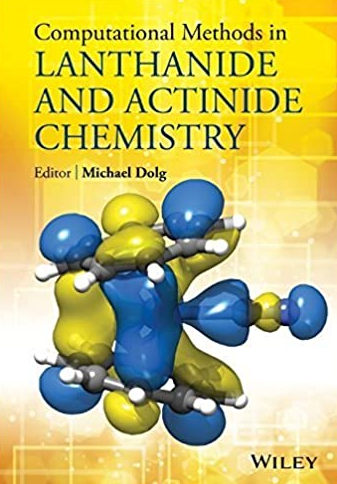
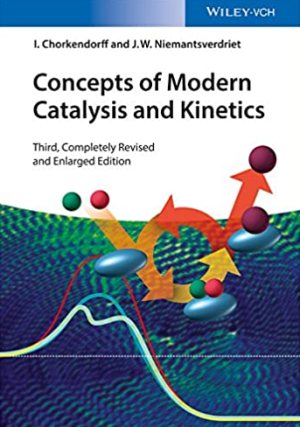

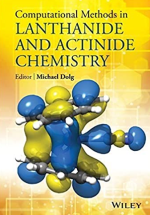
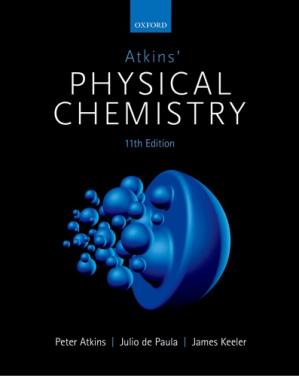
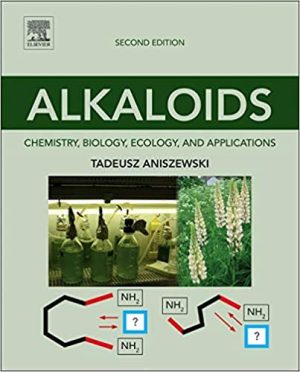
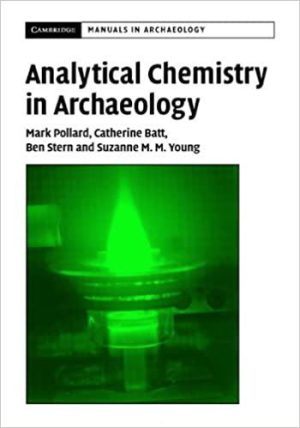
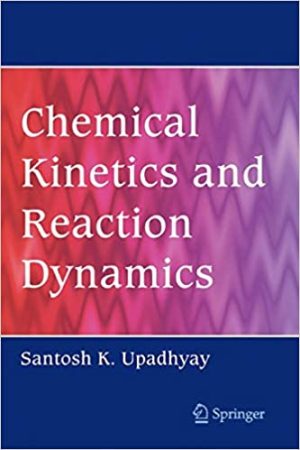
Reviews
There are no reviews yet.